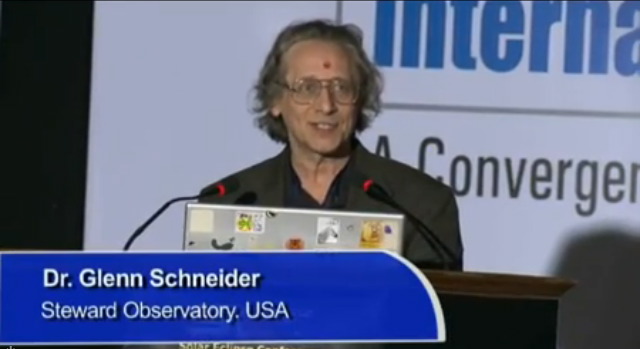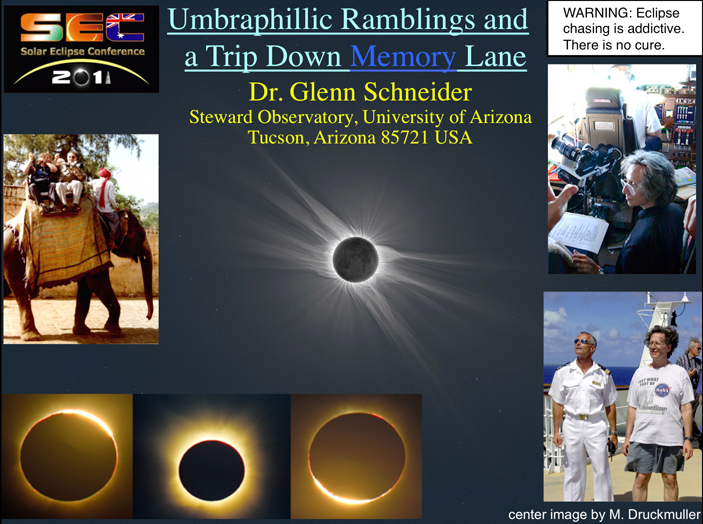
Click
HERE to
view/download the conference talk presentation material; ; ©2011
Glenn Schneider
(originally PowerPoint, converted to QuickTime movie format at lower
resolution; 192 Mb)
Click
HERE to
view/download a video of the conference talk.
ABSTRACT:
Are “we” (eclipse
chasers) a cult, or a culture? “Eclipse chasing” is a rare synthesis in
human endeavor of art, science, logistics, and addiction. In the course
of two generations recently explosively episodic advances in diverse
technologies following “Moore's Law” have enabled the transformation of
eclipse chasing from a pursuit of the very few into a globally
egalitarian activity. The “TSE experience” is simultaneously
intellectually stimulating, scientifically illuminating, and
spiritually uplifting, that (almost paradoxically) has unique
perceptual aspects that are symbiotically transculturally universal and
deeply individually personal. After more than four decades since his
first (and twenty-eight subsequent instances) of umbral immersion, one
umbraphile peers back through 1.5 hours plus of “shadow time” and
reflects on the confluences of technological and societal advancements
(and regressions) that have contributed to and cultivated the evolution
of contemporary eclipse chasing and eclipse chasers.
CONTRIBUTED
POSTER PAPER:
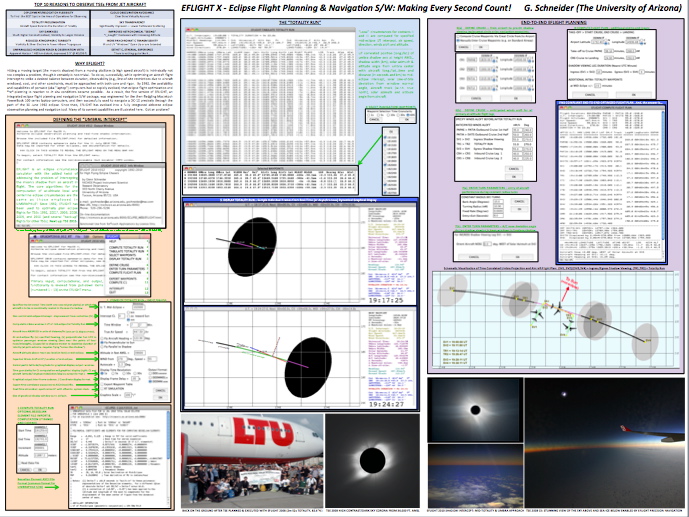
Click
HERE to view/download the
conference poster 12 MB PDF file; ©2011 Glenn Schneider)
ABSTRACT:
Hitting a moving target
(the moon's shadow) from a moving platform (a high speed aircraft) is
intrinsically not too complex a problem, though it certainly is
non-trivial. To do so, successfully, while optimizing an aircraft
flight intercept to strike a desired balance between duration,
observability (e.g., line-of-site restrictions due to aircraft
windows), cost, and other constraints, must be approached with both
care and rigor. By 1992, the availability and capabilities of
portable (aka "laptop") computers had so rapidly evolved, that eclipse
flight optimization and *re*-planning in reaction to in situ conditions
became possible. As a result, the first version of EFLIGHT, an
integrated eclipse flight planning and navigation S/W package, was
engineered for the then fledgling Macintosh PowerBook 100 series laptop
computers, and then successfully used to navigate a DC-10 precisely
through the path of the 30 June 1992 eclipse. Since then, EFLIGHT has
evolved into a fully integrated airborne eclipse observation planning
and navigation tool. Many of its current capabilities are illustrated
here. Got an airplane?
CONTRIBUTED
PHOTOGRAPHIC PRESENTATION:
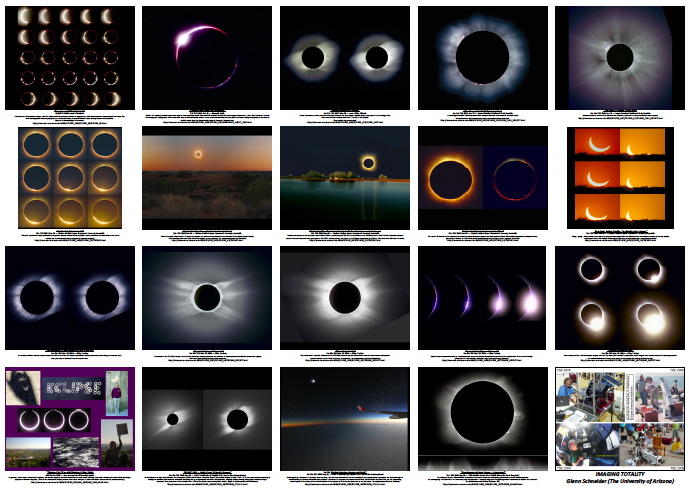
Click
HERE to view/download the
full size photographic presentation 29 MB PDF file; ©2011 Glenn
Schneider)
PRESENTER
BIOGRAPHY: Dr. Glenn
Schneider is an Astronomer at University of Arizona’s Steward
Observatory where, since 1994, he has served as the Project Instrument
Scientist for the Hubble Space Telescope’s Near Infra-red Camera and
Multi-Object Spectrometer, and currently is the Principal Investigator
for EXCEDE (the EXoplanetary Circumstellar Environments and Disk
Explorer) that is now undergoing technology maturation for a future
NASA space mission. His research and instrumental interests are
primarily centered on the formation, evolution, and characterization of
extrasolar planetary systems, and high contrast space-based
(coronagraphic) imaging systems. His studies have focused on the direct
detection of substellar and planetary mass companions to young and
near-by stars and the circumstellar environments from which such
systems may arise and interact. In concert with his scientific
investigations of circumstellar dust and debris disks and co-orbital
bodies they may harbor, he has played a leading role in the development
of very high contrast space-based coronagraphic and near-infrared
imaging systems and techniques with HST, leading to spatially resolved
scattered light images the birthplaces of planetary systems. Dr.
Schneider is a member of the International Astronomical Union’s Working
Group on Solar Eclipses with expertise in the high-precision numerical
calculation of eclipse circumstances and the application of those
computations in planning and carrying out observations of total solar
eclipses. For more than three decades, Dr. Schneider has lead
expeditionary groups and conducted such observations on land, sea and
air of twenty-nine total solar eclipses occurring since 7 March 1970
from remote locations across the globe conducting direct, polarimetric,
and spectrophotometric imaging programs. Additionally, he has executed
five, and planned nine, high-altitude eclipse intercepts with jet
aircraft and is now preparing for his next stratospheric eclipse
flight, for TSE 2015, at 63° North latitude east of Iceland.
Additional information on his background and research interests may be
found at:
http://nicmosis.as.arizona.edu:8000/
Images,
graphics and information contained within in the above linked
presentation files may be preproduced for non-profit educatioan and
public outreach purposes. Please contact Glenn Schneider
(gschneider@as.arizona.edu) for other permissions and additional
information.
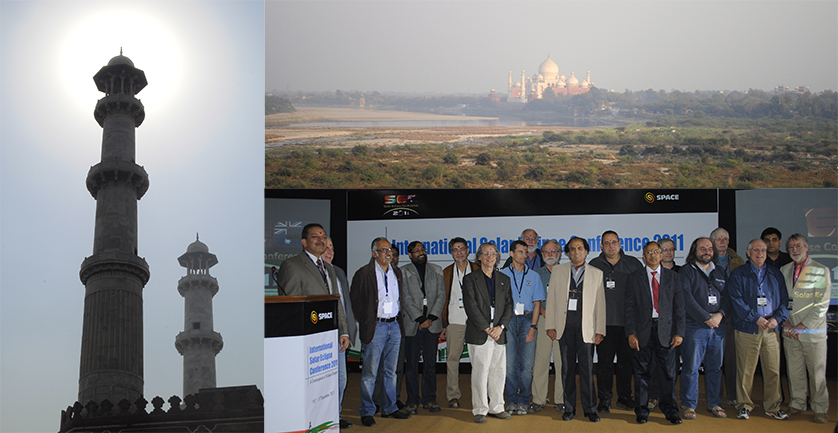
Click
HERE
to view photographs from the SEC2011 conference hosted by SPACE.
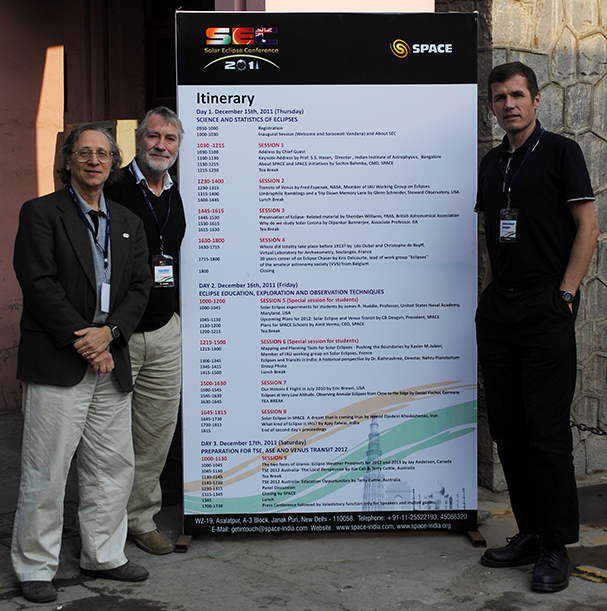
Click
HERE
to view the conference schedule


